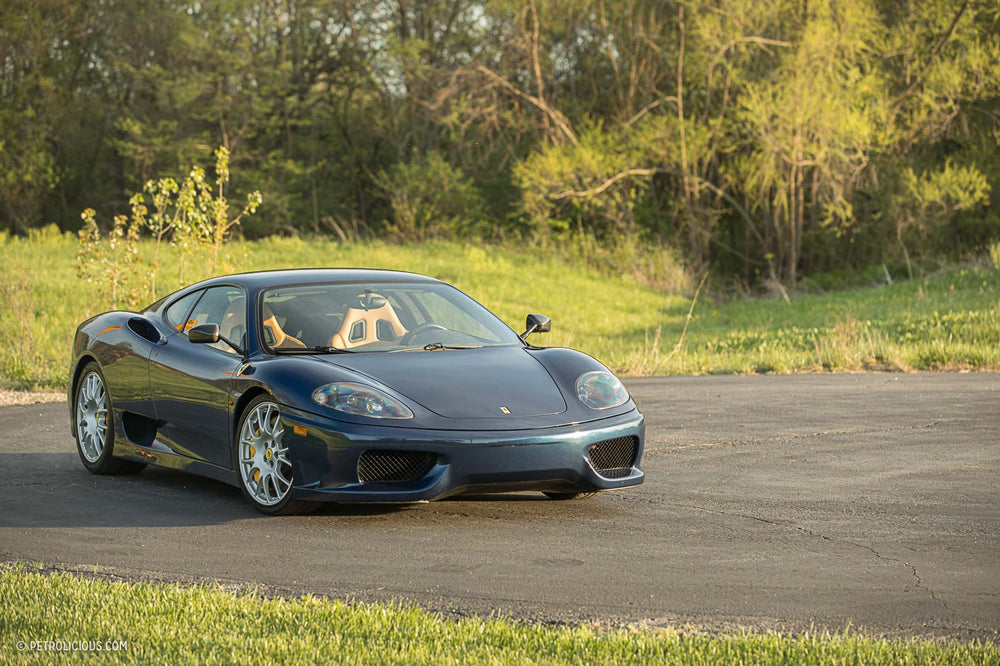The Ferrari 360 is one of those cars that ran the gamut of statuses rather quickly. What I mean is that usually it takes a course of decades for something like this to move from “wealthy playboy toy” to “less-wealthy wannabe playboy toy,” to “properly appreciated piece of sports car history.” Typically this involves a bunch of people buying them in their incipient model year, revving the ever-living hell out of them in front of nightclubs to impress drunk people who care not about the machine but what it confers about its owner’s bank account, and then selling them when the new model comes out. The next owner will likely be a “baller on a budget,” and will abuse the car with even less discrimination, before finally they break something, balk at the cost of repairing a high-end machine intended for exercise instead of posturing, and then sell the poor thing finally to someone who has the wherewithal and ability to treat the car correctly.



Cars like the 360 unfortunately seem to suffer before they are cherished, but the Challenge Stradale models largely avoid such a fate: why would Joe Poser pay more for a less comfortable version of, what to him, is the same car? No, the Ferrari 360 CS is for those who know. A Challenge Stradale badge means something more than “Look at my Ferrari.” Driving down 5th Avenue in this one is not advisable unless the girl you’ve picked up doesn’t mind the harsh suspension that’s about to capsize her frappucino into ruining her Vera Wang ensemble.
A lot of cars use the “racer on the road” marketing cliche, but not many live up to it like this one. That said, every CS from the factory came equipped with paddle shift, or as Ferrari calls it, the “F1” transmission. This is sort of a point of contention with people, and for good reason—because the true race cars from Maranello in this period had in fact ditched the manual long ago, does that mean the CS is more true to its intentions because it too has only two pedals? Or does the lack of a five- or six-speed dilute what is supposed to be a more analog experience that the term “race-inspired” connotes? For this owner, it was the former. And he did something about it.





Enlisting the help of Black Horse Motorwerks in Kansas City, the owner of this particular blue 360 Challenge Stradale converted his into an even more exclusive machine. Maranello is likely not thrilled at this “sacrilege,” but I’m confident that most everyone reading this will be appreciative of this decision—a certain level of boldness is required to heavily modify a car that is currently rising in value, yet it’s a losing battle to argue against the addition of a six-speed manual where once there wasn’t.
Swapping a pedal box into your buddy’s hand-me-down Honda in the backyard is not akin to the work that went into this car’s transformation; this is, by relative standards, a very modern drivetrain, and as such it has a host of computers regulating its operation that are far in excess of anything you can simply swap the plugs around in to complete your goal. In order to give this 360 its injection of analog, the procedure was more computer science than traditional wrenching. The typical installation of a master and slave cylinder, pedals, shift box and tower, linkages, and all the other mechanical bits was part of the process, sure, but the real challenge came from the ECUs. For anyone who’s ever had to deal with a car that’s put itself into some kind of “limp mode,” or really, any other issues with sensors or regulators or modules, you’ll know how impenetrable things like this can be; it’s not a matter of worn-out parts that you can see and touch and replace, but computers are still understandable, if you’re willing to adapt to the way cars are controlled in the more modern age.




To spare this six-speed Challenge from a life as a hacked-together “custom,” Black Horse ensured that everything that was modified was done in a fashion that would leave the car looking, and more importantly, behaving, as it would if it were fully factory. It was not the case of simple moving over the parts from a regular Modena’s six-speed either. For starters, one of the biggest issues was the rewriting the software (which is specific to the CS) to adapt to the missing F1 transmission that it was designed solely to work with. The entirety of the transmission was removed—down to every wire in the harness—and besides the new ECU programming, the instrument cluster had to be roundly revamped in order to let go of its reliance on the F1 system that was so integrated into its functions.







All of this was completed using an intelligent mixture of all OEM parts. Not plug and play, but not a mess of extraneous wiring and patch jobs either, not at all. In fact, the only piece not bearing Ferrari part numbers is the console surrounding the new shifter. A Modena piece could have simply been fitted in the place of the Challenge’s, but in this case the Ferrari part would have been the less desirable option in terms of keeping the car looking OEM. It seems oxymoronic to use a custom piece to achieve a non-custom look, but that’s exactly what was needed in this case. The resulting console is a perfect representation of the “CS as six speed,” for isn’t it better to follow the initial vision to the very last piece of interior trim?
It takes guts to decide on a project like this, it takes talent to pull it off, but it doesn’t take much more than a few seconds’ thought to appreciate the result.























































